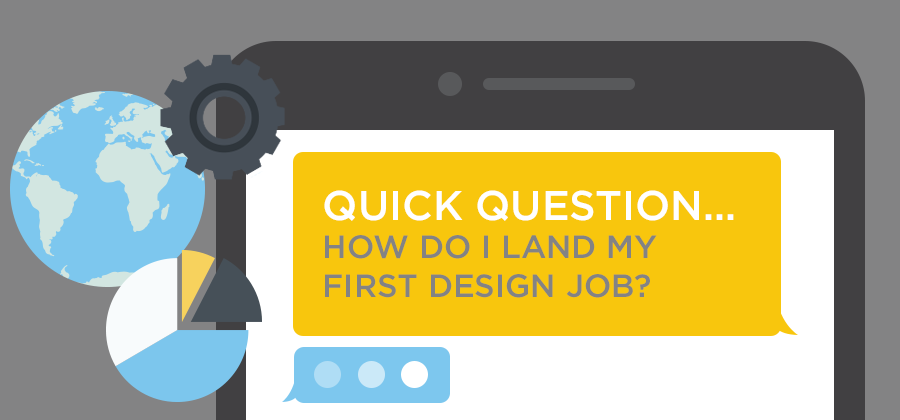

HOW DO I LAND MY FIRST DESIGN JOB?
Reading TimeRecently I, Sally Bell, had the opportunity to speak to a group of 2nd and 3rd year students at Regent’s University London as part of an industry panel, amongst whom were creatives from Fashion, Fashion Marketing, Interior Design and Graphic Design.
Each panelist spent a few minutes explaining their dos and don’ts on breaking into the industry, tailored towards their chosen line of profession. Most of what was covered may seem on the surface like common sense, but the fact that these points were echoed time and again, backed up with hilarious if not cringe-worthy anecdotes, leads me to believe that they are more commonplace than I’d like to think. Perhaps, I thought, these tips should be put out as a type of warning to anyone preparing for the big bad world of creative job interviews.
At B1 Creative, we love having young talent joining our team, so we want to help you to put your best foot forward when getting into design. These are our suggestions on how to get into the industry, whether your first step is into the B1 studio or elsewhere:
PROMOTE YOURSELF.
You may be the world’s greatest designer, waiting to be discovered, but if you aren’t telling anyone, how are they supposed to know? Make sure to share your work with the world, and the easiest way of doing this is on the Internet. You don’t need to know how to code to have an online presence. Try Cargo Collective (cargocollective.com) or Behance (behance.net) to help build an online portfolio to effectively showcase your work. Set up both Twitter and Instagram accounts and get following your favourites, to help you engage with the industry, develop conversations and keep up-to-date with the latest trends and news.
There is no need to wait until you are looking for a job to do this; by putting yourself out there, there is more chance someone will see you.
FANTASTIC TWITTER PAGES YOU SHOULD BE FOLLOWING:
@B1CREATIVE (OBVIOUSLY)
@ONEMINUTEBRIEFS
@UXPIN
@THISISYCN
@YCC
@INVISIONAPP
@CREATIVEREVIEW
Word to the wise, keep your outward facing profile professional, and perhaps consider tweaking those Facebook privacy settings, rather than live to regret what you post. Prospective employers don’t know you, so that Twitter handle you created in your teenage years is the only thing they have to go off. Proclaiming yourself as the world’s biggest One Direction fan might not be the persona you wish to portray for work. This goes for your email address too; ditch the nicknames and “xxx”s and start again.
PUT IN THE EFFORT AND DO SOME RESEARCH.
In this day and age, it is not difficult to apply a little legwork when applying for a job or preparing for an interview. There will be a reason you’re applying for a particular role, so make sure that comes across in your initial communication. This will personalise your approach, and prove that you haven’t just clicked “Apply to all” button on a job site (and no, before you start searching for it, this button is not a real thing). If you’ve found the company you’re applying to on an external site, spend some time reading through their website, for an insight into the type of people you’re talking to. If you are emailing your CV and portfolio to me, for example, you already know at least my name, as it is in my email address. So use it! There is no reason I should ever receive an email with a “To whom it may concern” heading, and when I do, that simply screams laziness. You might as well put “Can’t be bothered” in the subject line. I am by no means condoning stalking, but find the company on Twitter and get to know them a little. If you have a personal, friendly approach, I’m far more likely to want to spend time with you face-to-face.
Make sure your portfolio is in a format that makes it a conversation piece, not a stack of ramshackled bits of paper.

PRESENT YOURSELF.
Remember that impressions last. When employing someone, we have two first impressions of them; firstly, the CV and work they have chosen to send to get our attention. This is by far the most important part of the application process. So, instead of labelling these next points “Do”s, we’ve chosen to go with, “For the love of God, PLEASE do”s:
1. You’re a designer, so make sure you have designed your own CV. No word documents, and definitely no Powerpoints either.
2. Not only should your CV and portfolio be designed by you, but if you’re worth giving a job to, they should be stunningly designed too. Imagine it’s the first brief you’ve been given by your future employer; it’s that important.
3. Don’t just focus on how your CV looks, but what it says. Portray the right qualities, including your experience, skills and interests, in a clear way so that we can understand it.
4. SPELLCHECK. That is all.
5. Include links to your online portfolio. You may not be able to attach your work in an email, so this will make sure we can see what your work is all about.
6. Build your portfolio to showcase all that you can do. Never doubt having many strings to your bow, as you’ll never know when they’ll come in handy. Leave out the group projects where you had a small contribution. This is misleading, and we’re more likely to want to employ the one who actually did the work.
Now we’ve got those out of the way, the second first impression we get of you is when you show up at our door. Before we continue, congratulations, you’ve done it! We like the sound of you and we want to meet you, but you’re not completely off the hook yet. Think about what to wear. We are not an overly formal studio, so no need for a top hat and tails, but think about what perception you want us to have of you. You’ll also want to think about what your portfolio is wearing too; bring your work in in a format that makes it a conversation piece, not a stack of ramshackled bits of paper. If you’ve designed magazines or books, bring them in for us to flick through, and don’t just present a flat image on a screen. On the other hand, if you’ve designed an app or website, we want to see it in action, and not just printed out.
FOLLOW UP.
If you don’t ask, you simply don’t get. Communication skills are invaluable in any job, so by being proactive and communicating well with us, we’ll be confident that you can do it with our clients too. Additionally, it means that you have a realistic expectation of what to expect at each stage of the process.
If you haven’t heard back from an email, a quick call to make sure your message was received is a good idea. After an interview, why not send a “Thank you, nice to meet you” note? The more you can stick in an employer’s mind – in a good way – the more chance you have at being successful.
GOOD LUCK!
So, take these vital pointers and go forth into the design industry. If you have more words of wisdom, helpful tips or hilarious anecdotes that we’re likely to enjoy over a cup of tea and a biscuit, please, do get in touch… especially if you’re an incredibly talented designer.
